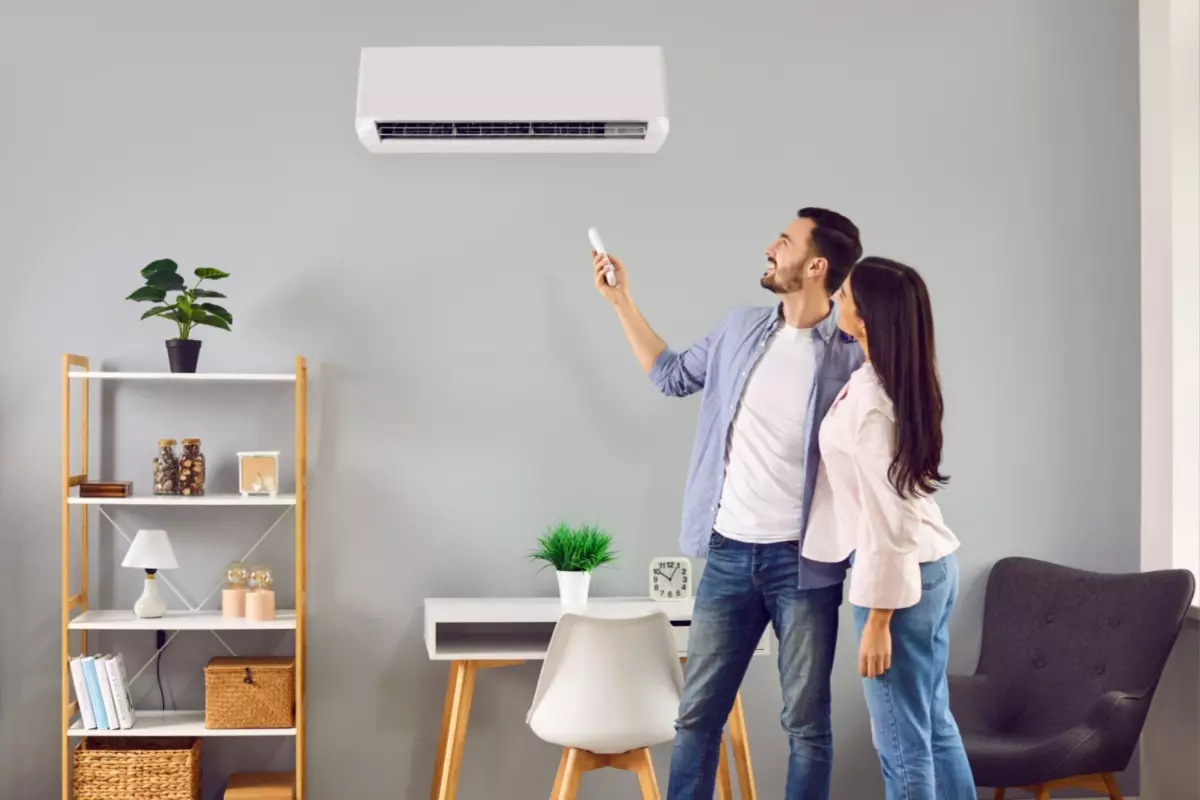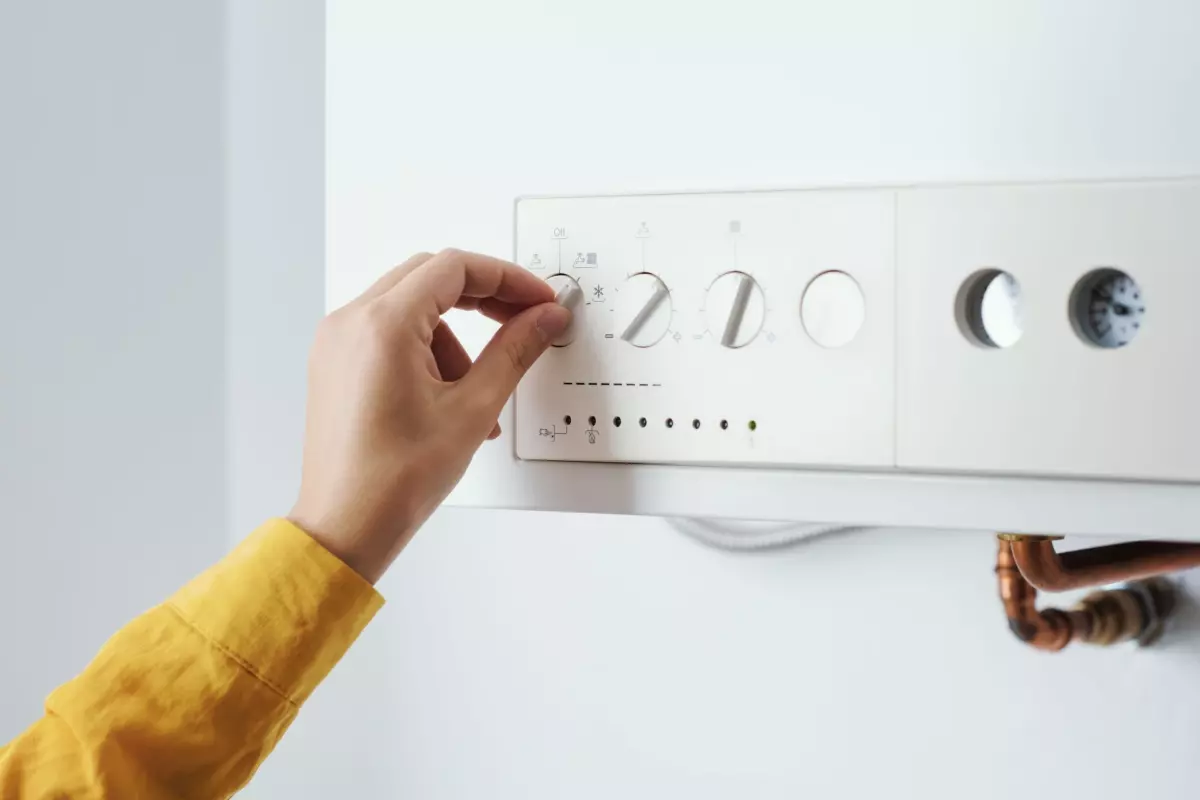During the summer heat, your air conditioner becomes your best friend. Ninety percent of households nationwide rely on air conditioning to stay cool. But what happens if it stops blowing cold air? And how does air conditioning work?
This article will examine the top causes of your air conditioner not blowing cold air and provide recommendations for maintaining and financing your AC’s upkeep.
Understanding why your AC is not blowing cold air helps you tackle the issue immediately to maintain a comfortable indoor environment. There are numerous reasons that might be affecting your system, from dirty air filters to aging components. Here are the top culprits to look out for:
A dirty and clogged air filter is one of the most common and easily overlooked causes of an AC not blowing cold air. The air filter captures and keeps dust, dirt, pet dander, allergens, and other pollutants out of your indoor environment. However, this dirty air can accumulate over time and block your AC’s filter, restricting its airflow and cooling capacity.

Filters should be replaced every 90 days to ensure uninterrupted airflow. If you have pets or live in a dusty environment, inspect your filters every 60 days, as pet hair and dust can cause filters to clog faster.
During the summer, when using your AC more frequently, make sure to check them every month, as continuous operation can lead to debris accumulating more quickly. Air filters typically cost around $6 to $23.
Refrigerant is a substance used in your air conditioner to absorb and remove heat from your home. If your system has a low refrigerant level, you may notice your AC blowing air, but it won’t be cold. This is often caused by leaks or gradual depletion.
Signs of low refrigerant levels to watch out for include:
Refrigerant handling requires a certified HVAC technician, as it requires professional tools and knowledge for safe and effective handling. The service can range from $200 to $500.
If the technician finds a leak, they will seal it and refill the system with the appropriate amount of refrigerant. This will restore the cooling efficiency and prevent the system from overworking.
The compressor in your air conditioner is responsible for moving refrigerant throughout the unit to facilitate cooling. When the compressor is not working correctly, it can lead to a complete system failure. Telltale signs of a faulty compressor include:
To extend the life of your compressor, ensure routine maintenance checks, which include cleaning air filters and checking refrigerant levels. This reduces stress on the compressor and improves overall system efficiency.
A thermostat controls the air conditioner’s compressor and fan. It measures indoor temperatures and uses this information to determine when the rest of the HVAC system should run and when it should stop.
The two major issues with thermostats are incorrect settings and calibration issues. The latter happens when the thermostat is not accurately reading the room temperature, leading to over or under-operation of your AC system. If you notice frequent cycling or insufficient cooling, your thermostat may need to be recalibrated to reflect true room temperatures accurately.

On the bright side, troubleshooting and resolving common thermostat-related issues are pretty simple. First, to address incorrect settings, make sure your thermostat is set to “cool.” Sometimes, it can be accidentally left on “fan only.” This setting circulates air without cooling it.
To address calibration issues, ensure your thermostat is set to “auto” for cooling, as it optimizes your AC to cycle on and off based on room temperature rather than continuously working.
If these fixes don’t improve the temperature of the air, consider replacing your thermostat. Changing it yourself will cost you around $35 to $150.
Condensate drains in your air conditioning system remove moisture from the air inside your home. When these drains become clogged due to dirt, dust, and mold accumulation, they can cause blockages, leading to water backup and potential damage to your system. This can also increase humidity levels inside your house.
To prevent clogs, check the condensate drain line at least twice a year to make sure it is clear, especially during high usage months when humidity levels are high. You can find it near the indoor cooling coil mounted above the furnace in the basement or utility closet.
If you notice dirt or blockage, you can clean it with a mild, non-corrosive solution to flush the drain lines. Pour the cleaning solution directly into the drain access point near the air handler, which is typically located in the attic, basement, garage, or a dedicated closet. Leave the solution for about 30 minutes, then flush it with water to ensure it is clean.
However, if you suspect a severe blockage or notice water pooling around the furnace or indoor unit, it may be time to call a professional. Depending on the complexity of the blockage, it can cost around $75 to $250.
Condenser coils, located on the outdoor unit of your air conditioner, are responsible for expelling heat from your home. When these coils accumulate dirt and debris, they become inefficient, leading to increased energy consumption and reduced cooling performance.
Similar to cleaning your condensate drain, it’s recommended that you also clean these coils at least once a year. Again, you should clean more frequently during periods of high usage or in an environment prone to dust and foliage.
To clean them, ensure the AC unit is turned off at the circuit breaker. Then, wash away any loose debris with a garden hose in a gentle stream. Use a commercially available coil cleaner for the caked-on grime. Lastly, carefully straighten any bent fins with a fin comb to improve the airflow and efficiency of the coil.
While basic cleaning can be done on your own, seeking expert help is recommended for complete maintenance or if the system exhibits signs of severe inefficiencies, such as significantly increased energy bills, poor cooling performance even after cleaning, or unusual system noises during operation. Professional cleaning can cost between $125 and $250.
Evaporator coils are located in your indoor unit, and they absorb heat from your home’s air. If they freeze, they won’t function properly to remove heat from inside the home. This would counteract the cooling effects, making it feel like the AC unit is not blowing cold air.
Evaporator coils freeze because of reduced or restricted airflow caused by dirty air filters or blocked air return grilles. Low refrigerant levels due to leaks can also cause the coil’s temperature to drop too low, resulting in freezing.
If you suspect your AC is not blowing cold air because of frozen evaporator coils, check for signs of visible frost or ice on the indoor unit or the refrigerant lines leading into your home.
Also, if you notice increased condensation and moisture around the air handler unit, this could indicate thawing ice from the coils. To prevent coil freezing, consider scheduling annual servicing by a professional to keep the system clean and the refrigerant levels adequate. This can cost around $110 to $130.
Also, replace your air filters every three months and clean your air grilles to maintain proper airflow.
Your air conditioner’s contactor in the outdoor condenser unit acts like a switch. It powers components such as the compressor and condenser fan and turns the AC unit on and off. Over time, this component may wear and pit, interrupting the electrical flow and preventing your AC from cooling adequately.

Signs of wear to watch out for include chattering sounds from the outdoor unit or failure to start your conditioner completely. You can also check for visible signs of damage or excessive electrical pitting like melted or burned areas, charred contacts, and visible erosion or divots on the metal surfaces.
As air conditioners age, their efficiency declines. This results in lower cooling effectiveness and increased operational costs. If your unit is over ten years old, needs frequent repairs, and is not cooling as well as it used to, it may be time to consider a replacement.
ENERGY STAR certification. A higher SEER rating indicates greater energy efficiency, with modern models typically ranging from 13 to 21.
ENERGY STAR-certified air conditioners meet the United States Environmental Protection Agency’s stringent energy efficiency standards, ensuring they use less energy and have a lower environmental effect.
Leaking ducts are a common yet often overlooked cause of inefficiency in air conditioning systems. When ducts leak, cooled air escapes before it reaches your living spaces. This lowers the overall efficiency of your air conditioner as leaks can make your AC work harder and longer to achieve desired temperatures.
Look for visible signs of wear and tear, such as gaps or holes in the ductwork, particularly near the AC unit and along the path to the vents.
If your ductwork is leaking, the HVAC technician may suggest professional duct sealing. This involves fixing connections and applying mastic sealant or metal tape to leaks. This procedure guarantees that air is contained within the duct system and efficiently distributed indoors. Depending on the severity, HVAC professionals typically charge $500 to $4,000.
Maintaining an air conditioner can be expensive when unexpected repairs or replacements are needed. For instance, annual maintenance can cost between $100 and $150, and repairs can cost several thousand dollars for major work. During emergencies, especially during the summer, HVAC maintenance and repair often can’t be postponed, but the costs can be a major barrier for homeowners.
On the bright side, many HVAC contractors offer HVAC financing solutions in addition to their services. These financing options enable homeowners to spread the cost of maintenance and repairs over time, avoiding substantial up-front payments. Opting for financing from full-service HVAC suppliers ensures that your air conditioning system remains in optimum condition without the immediate financial burden.
Now that you know the top reasons why your HVAC is not blowing cold air, you can easily identify the issue with your unit and address it accordingly to maintain indoor comfort. Make sure to familiarize yourself with all the financing options available to reduce financial stress without sacrificing quality or time.
Lastly, always take proactive steps to maintain your air conditioner so that you can enjoy uninterrupted cool air and peace of mind knowing your system is in good shape.